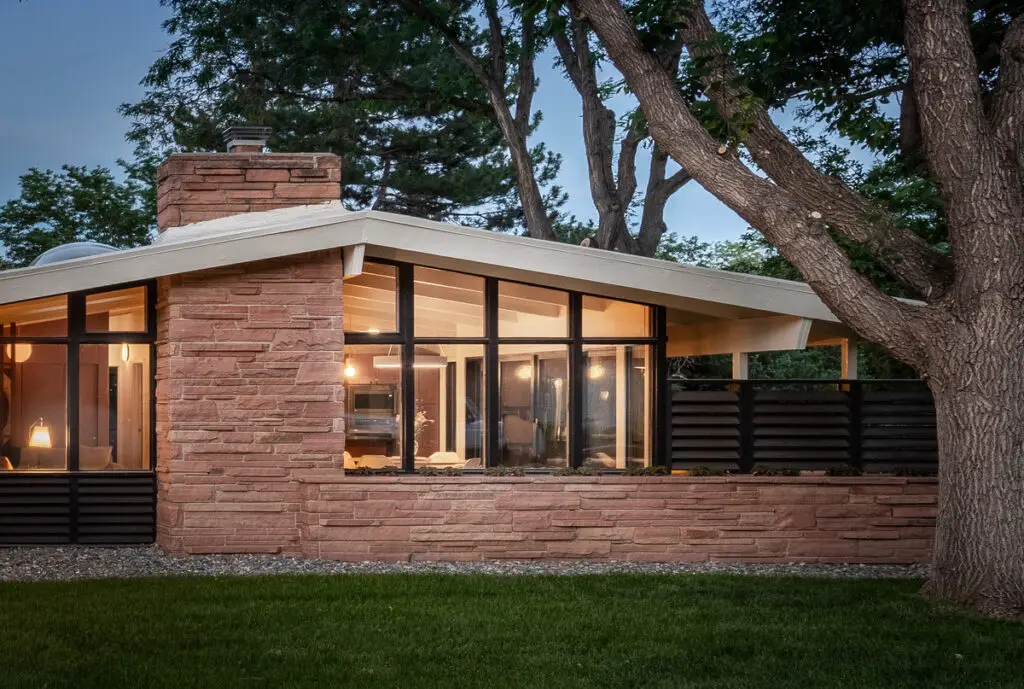
A dark and decaying midcentury home in Littleton, Colorado, with multiple poorly designed additions has been brought back to life. We chatted with the architects for the project, ArcDen Studio, to find out more.
Do you have any details on the client brief?
The clients were relocating from the east coast and looking to leave their fast-paced lifestyle in politics for a quiet, well-established neighborhood in Colorado. They ultimately settled on a quirky mid-century enclave in Arapaho Hills to become stewards of midcentury architecture.
One of the main reasons for our client’s lifestyle change was due to one of them experiencing the after-effects of recently having a stroke, so the home needed to include accessible elements like grab bars and zero transition in the shower. They also planned on having multiple rescue pets once the home was finished, and needed space to accommodate them in addition to finishes and other elements of the design that would be animal friendly.
The existing home was dark and somewhat claustrophobic so they tasked us with brightening the space and making it feel more open and welcoming. Having room for out-of-town guests and providing those guests with their own private area, separate from family rooms, was another request.
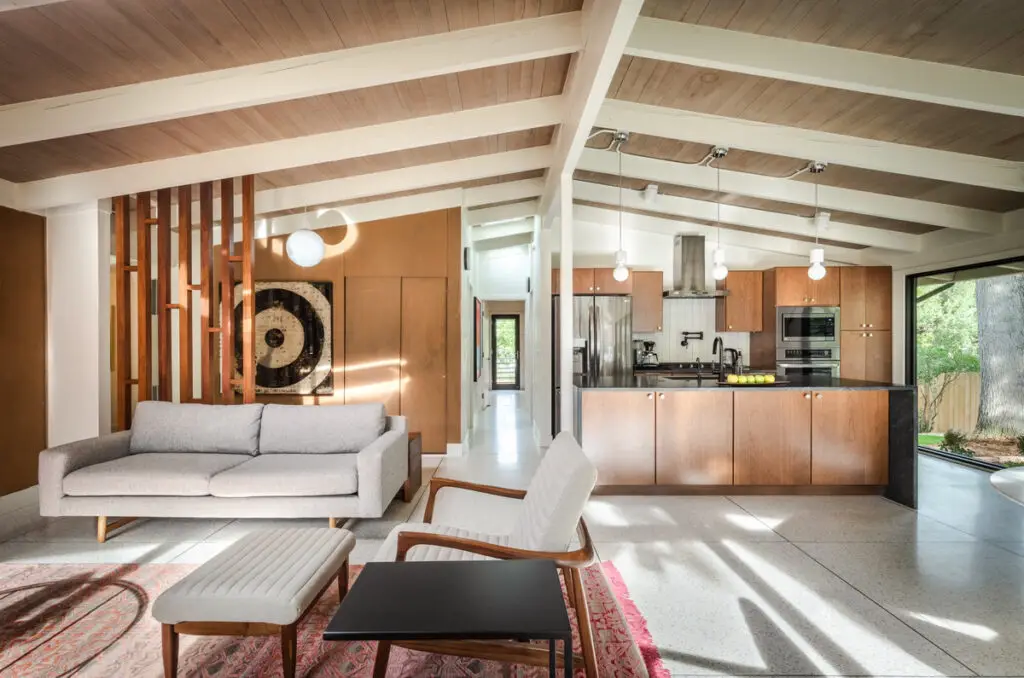
What midcentury influences did you want to include?
We wanted to be sure that the existing structure and connection to the exterior was retained and remade. The patio that is adjacent to the dining area was a poorly detailed sun room added at some point in the past. We removed it to help brighten the interior and provide that connection to the exterior.
What do you think was so special about this period in design?
To us this period marks a transition to modern architectural concepts that were achieved in a distinctly American way. These concepts had been explored in commercial and large-scale projects but not yet in the form of American housing – it was a break from European standards that expanded on ideas developed by Frank Lloyd Wright and others prior to World War II.
The shift was a catalyst for cost effective and exploratory concepts that would meet the postwar demands for housing.
What were your challenges for this project?
The home was added onto in the 90’s and this created an awkward triangular space that was separated from the main living area. We were able to address this by turning it into the ultimate guest suite. The addition included a walk-out basement space which became the Pet Haven – again maximizing the separation to create necessary program requested by the client.
Lastly, the challenge to simply meet the client’s expectations to live a 21st century lifestyle in a classic midcentury home. How do you transform small, cramped bedrooms into a spacious master suite with all the bells and whistles? How do you provide an open concept floor plan yet maintain privacy where programmatically required in a smaller footprint?
How do you make drastic changes while maintaining the essence of midcentury design and existing features deserving of restoration? These were important questions to be addressed throughout the remodel.
What was the house like previously?
Despite the sunroom, added skylights, and the large bank of windows at the front, the home felt very dark. This was due to poor materials on the inside (carpet, blinds, etc…) as well as how the home was divided up with interior partition walls. The majority of the home was original, so there was a lot of updating that was required.
What in your opinion are the best features of the home?
For us – and the clients – the stone fireplace was the best aspect of the home. In fact, we joked that they bought the house for the fireplace! This stone element is featured on both the interior and exterior of the house.
It also included a great concrete hearth that spans nearly the length of it. It creates this beautiful horizontal sightline to the exterior patio where it becomes a bench, further enhancing the interior/exterior connection. Ironically, past homeowners covered the original design intent of the hearth with a poorly designed addition.
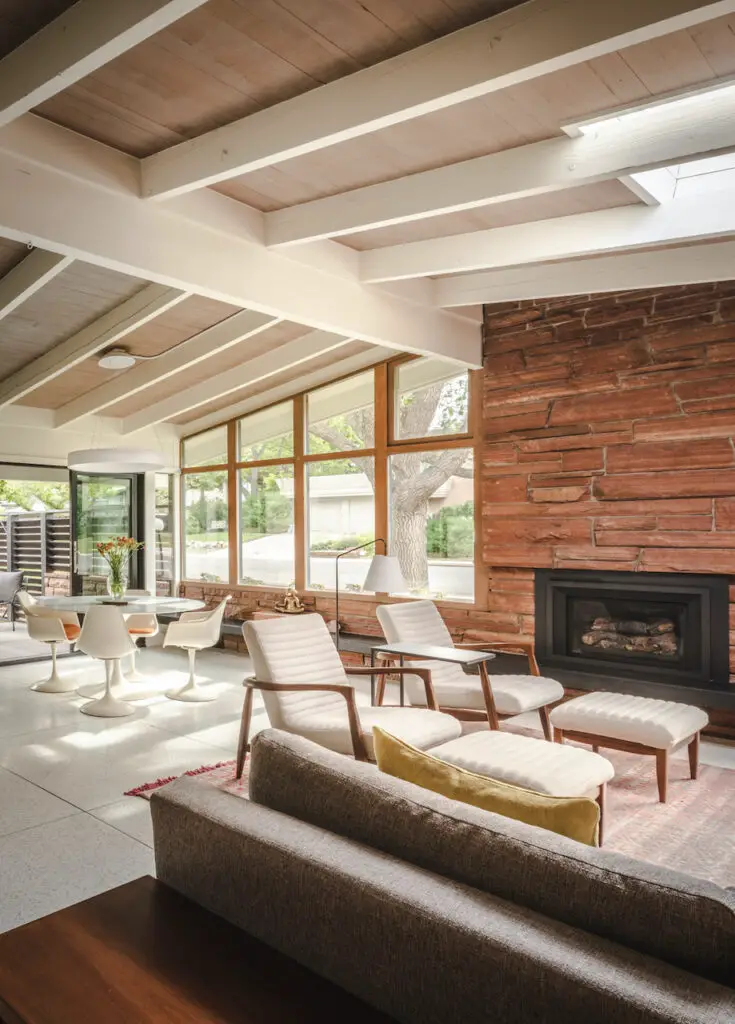
Last but not least, do you have any tips for people interested in buying a midcentury house ? What should they pay attention to and why?
We would say, first and foremost – when you choose to purchase and live in an original midcentury home, pay attention to the features of it that drew you to this style of architecture in the first place, then carefully study how to accentuate or preserve them. Many of these homes are a part of American history and deserve that level of consideration at a minimum.
When we were in the process of selecting a classic midcentury design for our client, we focused on whether the house had strong elements of horizontality, a unique use of natural material, indoor/outdoor connection, post and beam structure offering flexibility in redesign, original built-ins, and opportunities for bringing in a lot of natural light. These are classic elements that, when appropriately applied, produce good design that will last a lifetime.
A midcentury home can be a uniquely amazing and transformative space to live in. As typical American homes grow in size, midcentury homes may not provide the larger square footage that people are accustomed to. But because of the spatial efficiency, proportions, and connectivity to the outdoors, they have the potential to live much larger than they appear on paper.
More often than not, it’s likely that a midcentury home will still have its original mechanical, electrical, and plumbing systems. There can be hidden issues with these systems that may be costly to upgrade or replace. Additionally, they often have very little to no insulation and single pane windows.
Environmental efficiency through added insulation, windows and even a new roof, are elements that should be addressed to make the home the best it can be for not only the homeowner’s comfort (and safety) but also for the environment.
When approaching a new build with midcentury elements it’s important to keep the concept of scale and proportion in mind. The typical expectations for high ceilings, multiple stories and large spaces don’t always translate directly to midcentury style. Additionally, rather than focusing on the trends and nostalgia of the 1950’s, consider the opportunities that classic midcentury design presents for modern living.
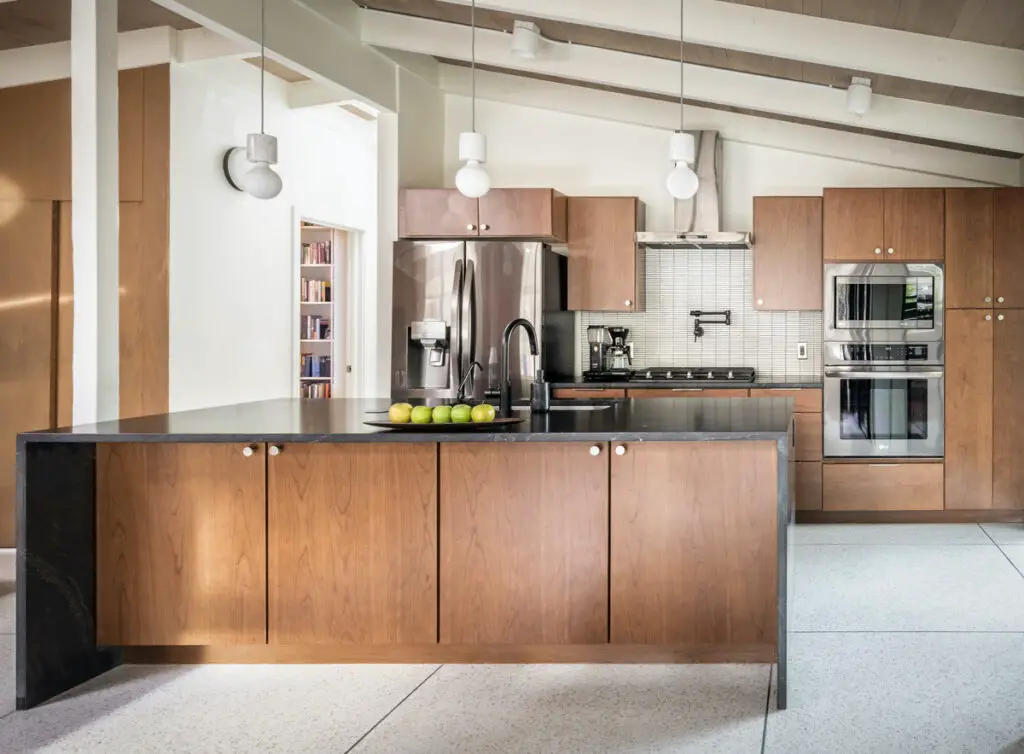
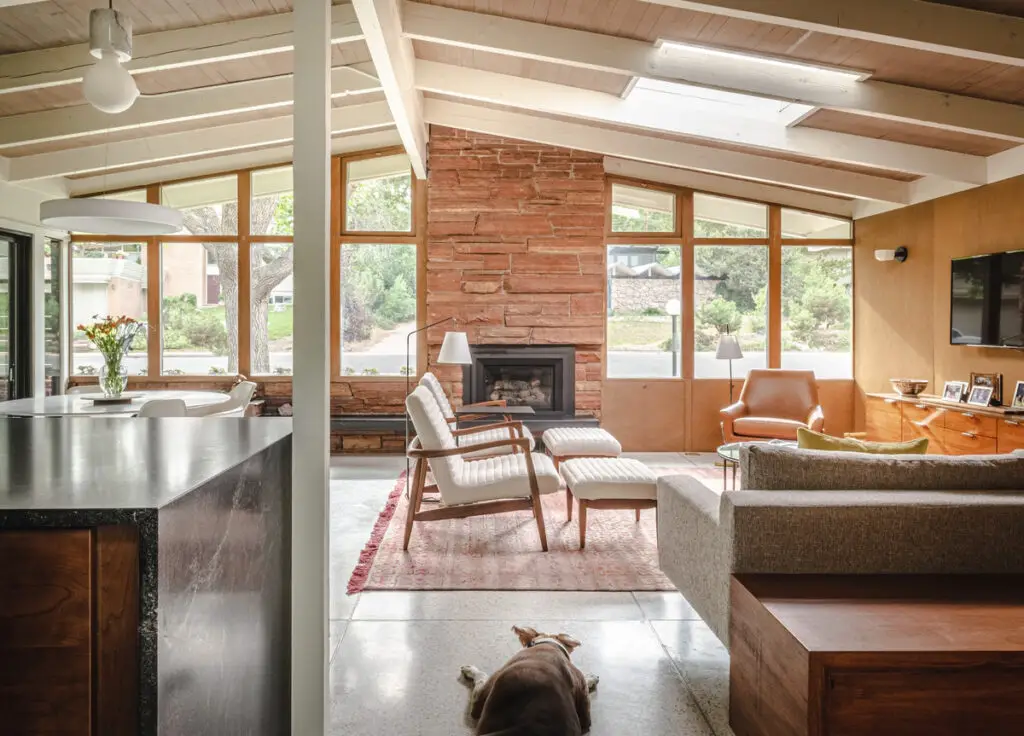
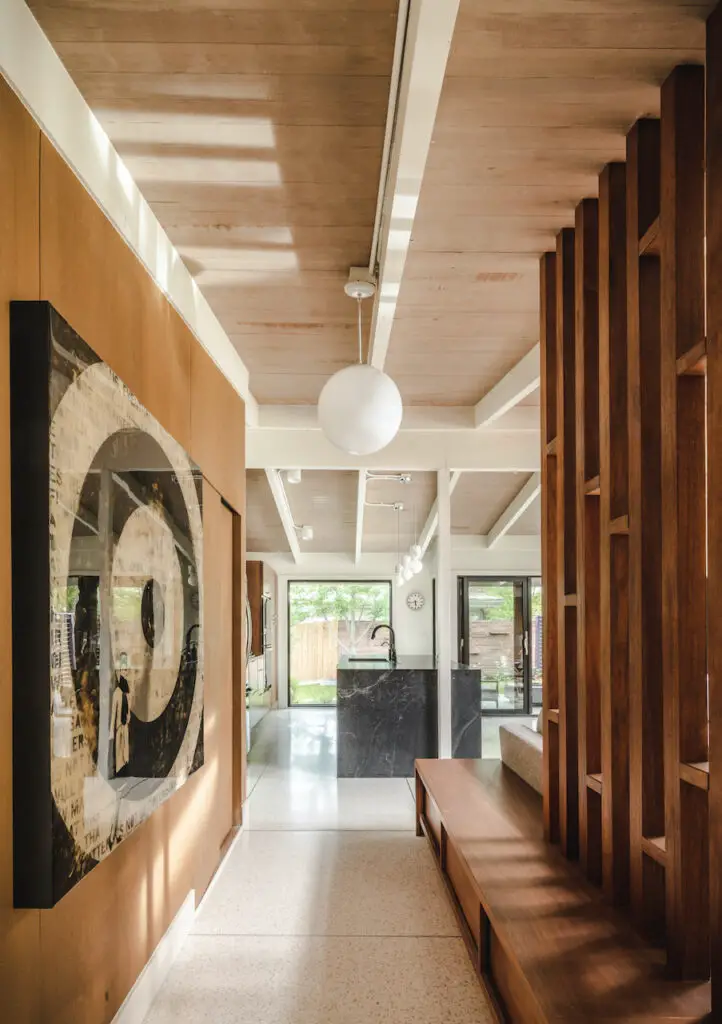
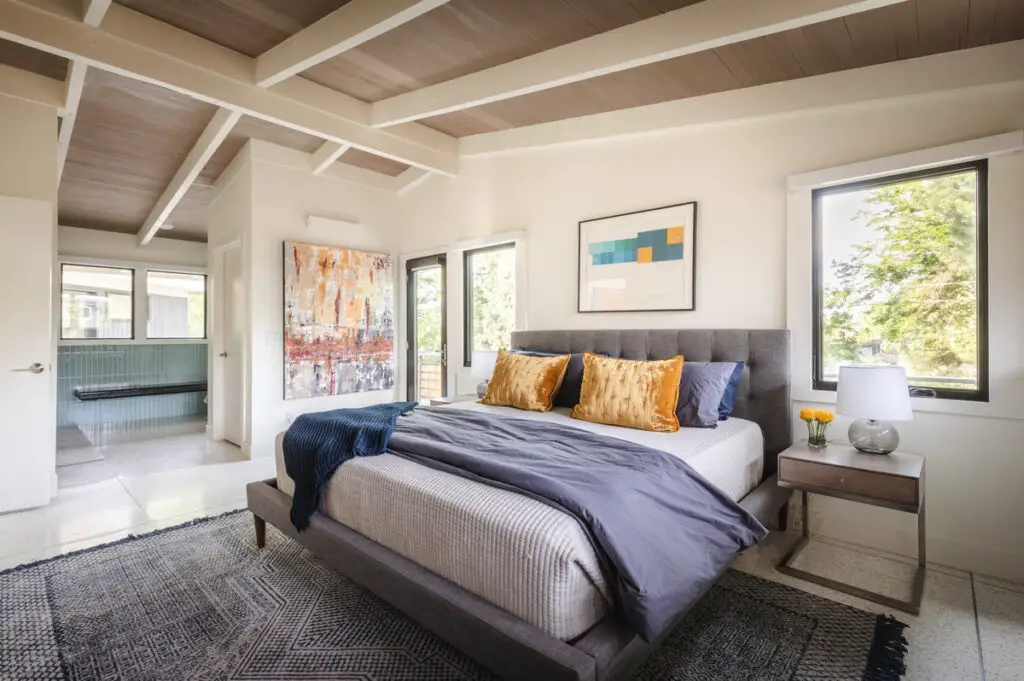
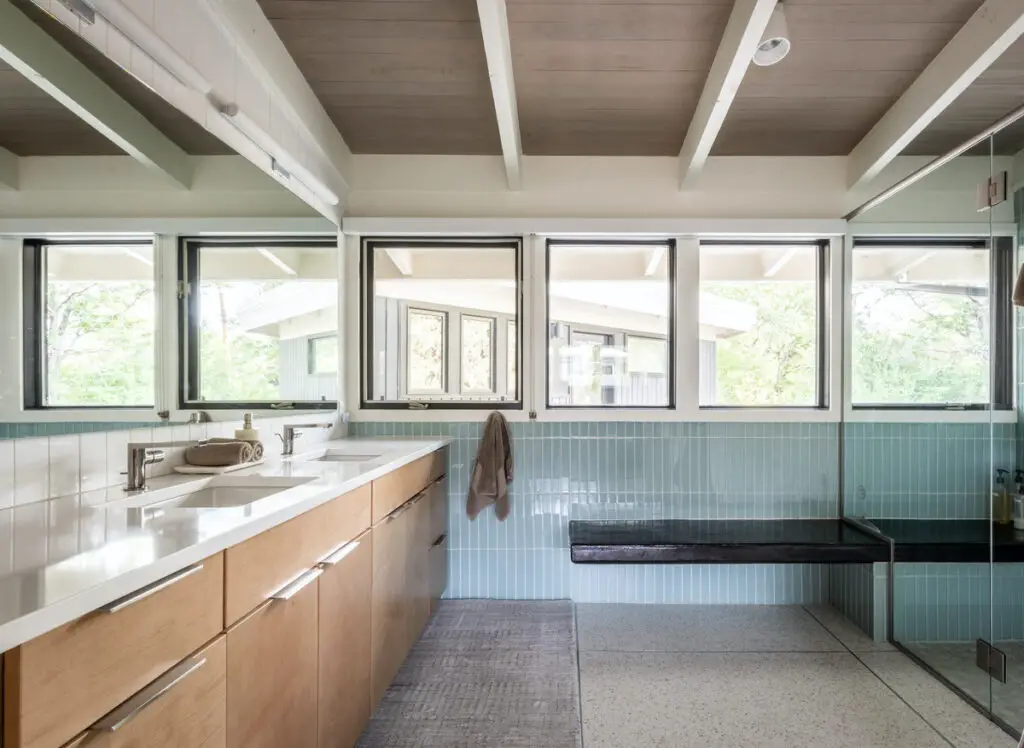
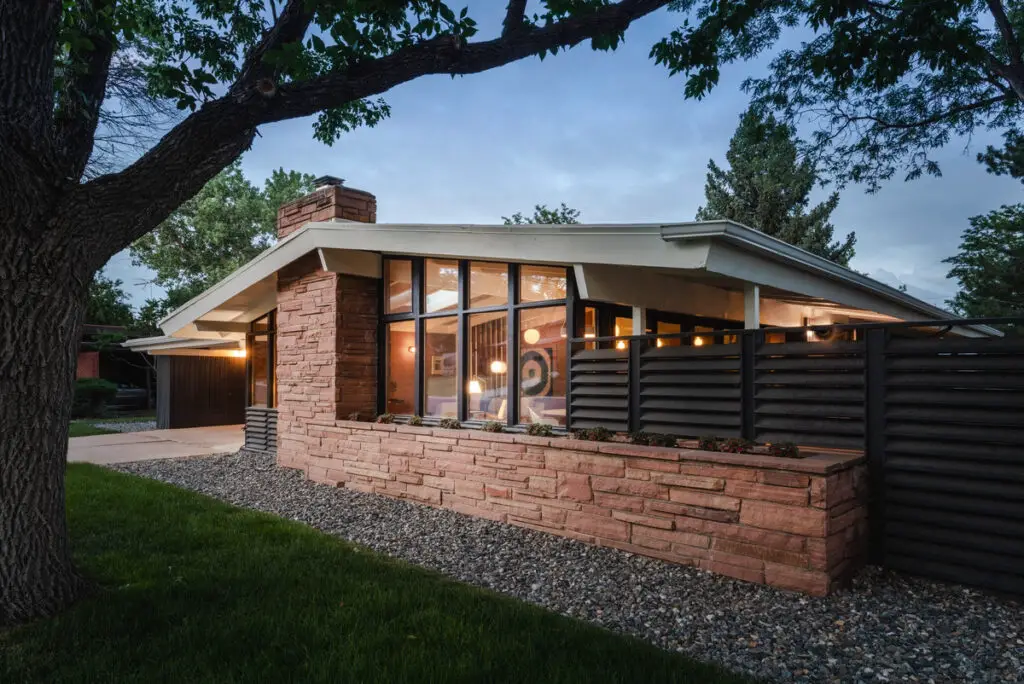
Photos by Justin Martin